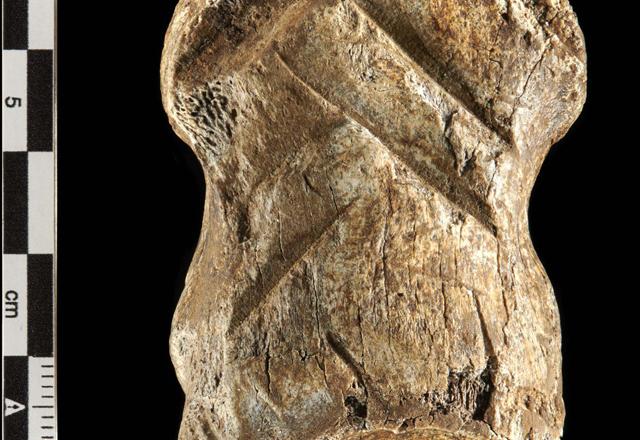You are here
Study confirms ancient Spanish cave art was made by Neanderthals
By AFP - Aug 05,2021 - Last updated at Aug 05,2021

Pedro Cantalejo, director of the Andalusian cave of Ardales, looks at Neanderthal cave-paintings inside the cavern on March 1, 2018 (AFP photo by Jorge Guerrero)
WASHINGTON — Neanderthals, long perceived to have been unsophisticated and brutish, really did paint stalagmites in a Spanish cave more than 60,000 years ago, according to a recently published study.
The issue had roiled the paleoarchaeology community ever since the publication of a 2018 paper attributing red ocher pigment found on the stalagmitic dome of Cueva de Ardales to our extinct "cousin" species.
The dating suggested the art was at least 64,800 years old, made at a time when modern humans did not inhabit the continent.
But the finding was contentious, and "a scientific article said that perhaps these pigments were a natural thing," a result of iron oxide flow, Francesco d'Errico, co-author of a new paper in the journal PNAS told AFP.
A new analysis revealed the composition and placement of the pigments were not consistent with natural processes — instead, the pigments were applied through splattering and blowing.
What's more, their texture did not match natural samples taken from the caves, suggesting the pigments came from an external source.
More detailed dating showed that the pigments were applied at different points in time, separated by more than ten thousand years.
This "supports the hypothesis that the Neanderthals came on several occasions, over several thousand years, to mark the cave with pigments," said d'Errico, of the University of Bordeaux.
It is difficult to compare the Neanderthal "art" to wall paintings made by prehistoric modern humans, such as those found in the Chauvet-Pont d'Arc cave of France, more 30,000 years old.
But the new finding adds to increasing evidence that Neanderthals, whose lineage went extinct around 40,000 years ago, were not the boorish relatives of Homo sapiens they were long portrayed to be.
The team wrote that the pigments are not "art" in the narrow sense of the word "but rather the result of graphic behaviours intent on perpetuating the symbolic significance of a space."
The cave formations "played a fundamental role in the symbolic systems of some Neanderthal communities," though what those symbols meant remains a mystery for now.
Related Articles
WASHINGTON — Neanderthals, long perceived to have been unsophisticated and brutish, really did paint stalagmites in a Spanish cave more than
PARIS — The design may be simple, but a chevron pattern etched onto a deer bone more than 50,000 years ago suggests that Neanderthals had th
PARIS — A child’s tooth at least 130,000 years old found in a Laos cave could help scientists uncover more information about an early human



















